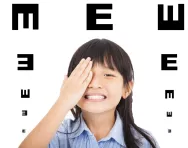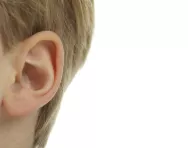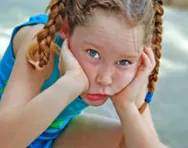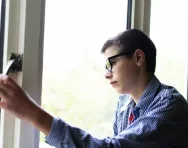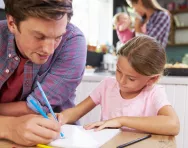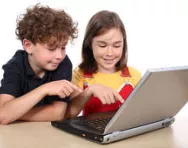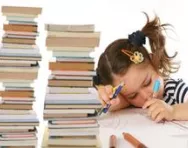Important update from TheSchoolRun
For the past 13 years, TheSchoolRun has been run by a small team of mums working from home, dedicated to providing quality educational resources to primary school parents. Unfortunately, rising supplier costs and falling revenue have made it impossible for us to continue operating, and we’ve had to make the difficult decision to close. The good news: We’ve arranged for another educational provider to take over many of our resources. These will be hosted on a new portal, where the content will be updated and expanded to support your child’s learning.
What this means for subscribers:
- Your subscription is still active, and for now, you can keep using the website as normal — just log in with your usual details to access all our articles and resources*.
- In a few months, all resources will move to the new portal. You’ll continue to have access there until your subscription ends. We’ll send you full details nearer the time.
- As a thank you for your support, we’ll also be sending you 16 primary school eBooks (worth £108.84) to download and keep.
A few changes to be aware of:
- The Learning Journey weekly email has ended, but your child’s plan will still be updated on your dashboard each Monday. Just log in to see the recommended worksheets.
- The 11+ weekly emails have now ended. We sent you all the remaining emails in the series at the end of March — please check your inbox (and spam folder) if you haven’t seen them. You can also follow the full programme here: 11+ Learning Journey.
If you have any questions, please contact us at [email protected]. Thank you for being part of our journey it’s been a privilege to support your family’s learning.
*If you need to reset your password, it will still work as usual. Please check your spam folder if the reset email doesn’t appear in your inbox.
How to recognise eyesight problems in your child
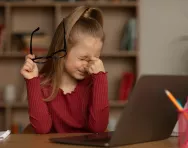
Poor eyesight can be a significant barrier to learning for your child, and it’s surprisingly common.
According to figures from Bayfields Opticians and Audiologists, 42% of under 16s who’ve had their eyes tested in the past five years have needed glasses or contact lenses.
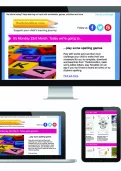
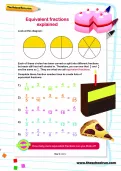
Start a unique learning programme!
- Weekly programme for each school year
- Worksheets sent direct to your inbox
- Keeps your child's learning on track
Does your child have an eyesight problem?
Some of the signs of vision problems in children include:
- Regularly rubbing their eyes
- Squinting
- A noticeable ‘turn’ in the eye, or misdirection of the eye, such as crossed eyes
- Closing one eye or trying to obscure their vision (such as with a hand over one eye) when reading or looking at object
- Headaches
- Finding it difficult to pay attention and focus
- Sitting close to the TV, or holding screens or books very close to their face
- Trying to avoid activities like writing and reading
- Confusion when writing and reading
- Sensitivity to light or watering eyes
- Unusual clumsiness and problems with hand-eye coordination, like ball games
- A ‘white reflex’ in photos: this is similar to the ‘red eye’ that you sometimes see in photos, but it looks white and can be a sign of an extremely serious problem, so it’s vital to seek medical attention immediately
Sometimes, however, there are no obvious signs that your child is struggling with their eyesight.
Eye tests for children
Eye checks are done at regular stages throughout early childhood, starting from birth.
Your child is likely to have vision screening as part of the School Entry Health Check, which is usually done in their Reception year at age four to five.
This generally takes place at school, and is considered important to identify eyesight problems that could affect their learning at an early stage, although it’s your right to decline screening. If they already wear glasses, their vision won’t be tested.
If a sight problem is detected in your child, they’ll be referred for further tests. This may be at a local optician’s practice, a community eye service or a hospital eye service.
While school entry vision screening can pick up on many eyesight problems, it’s important that your child has regular eye tests out of school, at a frequency recommended by your optician.
‘Often, parents don’t realise there’s a problem with their child’s eyesight, so although there are some signs to look out for, we’d always recommend they have a proper eye examination,’ says Bayfields’ founder and managing director Royston Bayfield.
NHS eye tests are free for all under-16s. Your child doesn’t have to be able to read to have an eye test: there are other ways of checking their vision that don’t rely on reading the traditional chart, such as looking at pictures.
The person who performs your child’s eye test is called an optometrist, while a dispensing optician orders and fits glasses.
Types of eyesight problems in children
There are many types of sight problems in children. Some of the most common include:
Lazy eye: one eye (or, unusually, both) struggles to develop a strong link to the brain, so they see less well out of that eye, and rely more on the ‘good eye.’ It affects around one in 50 children, and is harder to treat after the age of six.
Squint: one eye turns up, down, in or out, while the other looks straight ahead. Any squint that happens all the time should be checked out.
Short-sightedness (myopia): distant objects appear blurred while close objects are sharp. It often starts between the ages of six and 13.
Long-sightedness (hyperopia): close objects are out of focus while distant objects are clear. This is more common in adults, but does occur in children, and can lead to lazy eye or squint.
Astigmatism: the eye is shaped more like a rugby ball than a sphere. It usually occurs along with short- or long-sightedness. Uncorrected, it can cause lazy eye.
Colour blindness (colour vision deficiency): difficulty distinguishing between colours, usually red, yellow and green. It’s much more common in boys than girls.
Treating and correcting eyesight problems in children
How your child’s sight problems are treated will depend on the type of problem they have.
Usually, glasses are the first stage of treatment – and for some children, this is all they’ll need, with regular sight tests to check if their prescription has changed.
Children with a lazy eye may be given an eye patch to wear over the unaffected eye for a part of each day. This encourages them to use the lazy eye, instead of relying on the good one, so the two eyes eventually work equally well.
Children with a squint are often given eye exercises to work the muscles that control eye movement and get the eyes moving together. This may involve being referred to an orthoptist (a specialist in eye movement disorders) at an eye clinic.
In rare cases, surgery might be recommended to improve the alignment of the eyes, but if your child’s squint is recognised and treated at a young age, it’s less likely to be necessary.
5 tips for coping with your child’s sight problems
1. Talk to their teacher
Because eyesight problems can have an impact on children’s learning, it’s important that your child’s teacher knows about any issues that they have, and how they can support them. For example, your child may need to sit at the front of the classroom, or near a window so there’s more natural light.
2. Boost their confidence
So many children now wear glasses that it’s much less stigmatised than it was. You can help your child feel positive about their glasses by letting them choose their own frames, whether they have a cartoon character for younger kids, or a cool brand name for older children.
Looking at photos of celebrities or YouTubers who wear glasses could help your child feel more excited about wearing them, as can giving them lots of encouragement, like telling them how great they look.
Patches are often more obvious, and children may be self-conscious about how they look, so try to help them understand why it’s needed, and how it will improve their eyesight in the long run. Again, let your child be involved in choosing their patch: some like a colourful design, while others prefer a more subtle skin-tone plaster.
3. Make sure glasses are a good fit
If they’re too tight, slipping down their nose or wonky, they’ll be uncomfortable and your child may stop wearing them. You can have them adjusted for free at your child’s optician. You might want to pay a little extra for lightweight, scratch-resistant or anti-glare (better for computer work) lenses, too.
4. Persevere with treatment
Getting your child to do their eye exercises or wear their patch can be a chore, but it’s important to stick to any treatment programme they’re given, otherwise it’s likely to fail – and many eyesight problems are harder to correct as your child gets older. Make sure they go for sight tests as recommended by their optician, too.
5. Buy a spare pair of glasses
Lots of opticians have two-for-one deals on children’s glasses, and it’s well worth taking advantage of this if you can. Glasses are easily broken or misplaced at school, so it’s a good idea to have a spare pair. However, if they do break or lose their only pair, they’re entitled to a free repair or replacement: just ask their optician.
